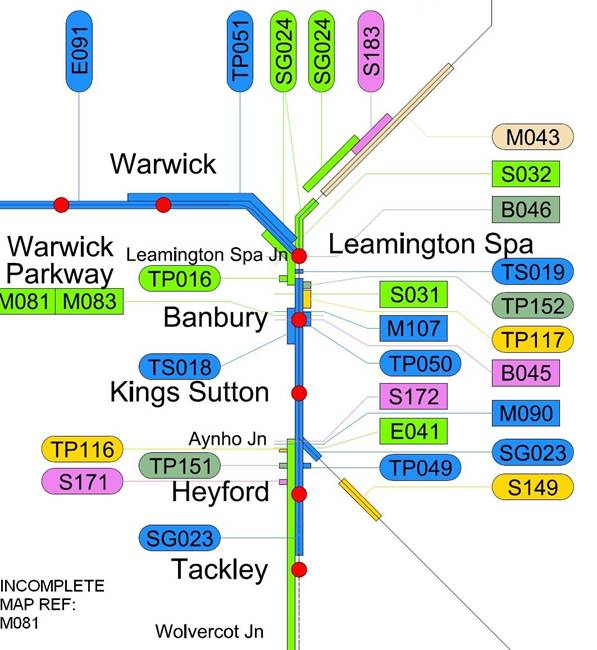Paul Sutherland, Route Planning Manager, LNW Route, Network Rail
Network Rail’s strategic themes for CP5 include making the biggest investment in the rail network since Victorian times, providing reliable timetables and becoming more customer focussed – all whilst reducing public subsidy ! Paul showed how taking an integrated approach to planning infrastructure enhancements helps Network Rail to deliver against all these objectives.
Whilst everyone wants a better rail network, agreeing the best time to do the enhancement work is never easy. For example whilst August is traditionally seen as a quieter time when work might be possible. On the LNW Route however, August is a peak time for some passenger and freight flows. It is a peak for holiday travel to the Lake District and for the import of Christmas goods from China which are carried in containers from Felixstowe to the north. The challenge then is to make the best possible use of the time available for enhancements so that disruption to passenger and freight rail operators and passengers is minimised.
 Paul has introduced a planning process which considers all of the work planned for CP5 along with all of the customers who will be affected. Planning begins with a map of the Route on which all the planned enhancements for CP5 have been plotted. The enhancements grouped into “bubbles” based on an area of railway geography where a major enhancement project can be identified as the lead project. The planning process then examines the other CP5 work and the traffic flows and tries to maximise the work which can be done during a single period of disruption. One objective is to avoid digging up the same piece of railway twice in a control period.
Paul has introduced a planning process which considers all of the work planned for CP5 along with all of the customers who will be affected. Planning begins with a map of the Route on which all the planned enhancements for CP5 have been plotted. The enhancements grouped into “bubbles” based on an area of railway geography where a major enhancement project can be identified as the lead project. The planning process then examines the other CP5 work and the traffic flows and tries to maximise the work which can be done during a single period of disruption. One objective is to avoid digging up the same piece of railway twice in a control period.
An industry access planning tool is used to model the financial impact of different planning options on the different stakeholders. The objective is to identify the most commercially efficient access strategy with a clear understanding of the trade-offs. The decisions made during the planning process and the reasons for them are recorded. The result is a plan to which all stakeholders can agree because they understand the impact of the alternatives on themselves and others.
The rail industry needs to find a cost-effective way to deliver the planned enhancements in CP5 whilst minimising disruption to passengers and freight customers. Planning with bubbles is providing a way of doing so.
Our thanks are due to Paul for stepping in at short notice to provide a fascinating insight into a topic which impacts everyone involved in rail operations.

Contact us